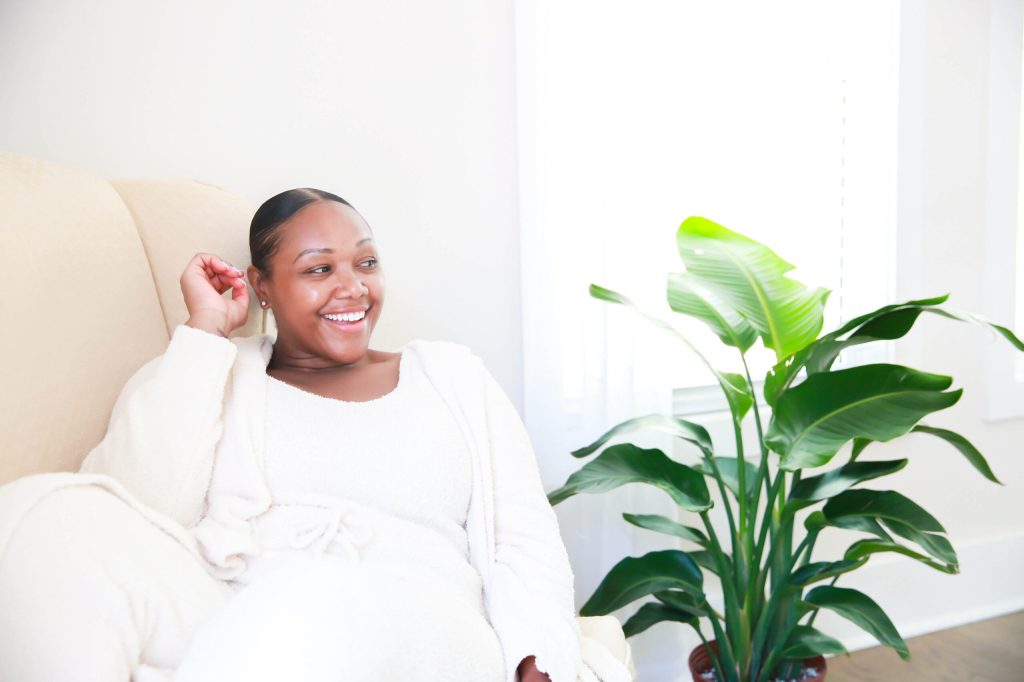Hi there! It’s been a while since my last post. I mean two years almost. I have been busy with life with two energetic growing kiddos plus a full time nursing job, and on top of that , I was also in school. But I missed writing so much and one day I decided to make time to write again. Today I’m excited to share with you something near and dear to my heart which is journaling. You see, I’ve been journaling and writing since I was about 6 or 7 and I’ve found it to be really therapeutic especially in times of struggle.
However, I wanna share with you a different form of journaling, which is mindful journaling. If you love everything health and wellness, or if you brand yourself as a wellness advocate, then chances are you’ve encountered mindfulness or the art of being mindful as part of your holistic wellness journey.
But what is mindfulness, really? Simply put, mindfulness is the act of being in the present moment. It’s being aware of your own thoughts and feelings. Greater Good magazine defines mindfulness as:
maintaining a moment-by-moment awareness of our thoughts, feelings, bodily sensations, and surrounding environment, through a gentle, nurturing lens. Mindfulness also involves acceptance, meaning that we pay attention to our thoughts and feelings without judging them—without believing, for instance, that there’s a “right” or “wrong” way to think or feel in a given moment. When we practice mindfulness, our thoughts tune into what we’re sensing in the present moment rather than rehashing the past or imagining the future.
Mindfulness is a state of self-awareness, where you are living and appreciating and acknowledging this very moment, and no other. It is often compared to meditation, since you do try to focus your mind on one thing or event that is happening. However, with meditation you are trying to clear your mind. With mindfulness you are still allowing thoughts and emotions to come in, but you accept them without judgment, then move on. In short, you’re simply letting yourself be.
What is Mindful Journaling?
Mindful journaling is a way to stay in the present moment before while writing everything down. It is traditional journaling practice taken to a whole new level to enjoy the benefits of mindfulness. With mindful journaling, you first get into a mindful, self-aware state, then you write about anything you are thinking or experiencing. I use mindful journaling because sometimes I can’t sit still, I have difficulty letting my thoughts just be, or I need a way to clearly see and record my thoughts and make them more tangible. It’s my way of being in the present moment with my thoughts. You see, journaling while in a mindful state is incredibly powerful.
How does Mindful Journaling Work?
Instead of recalling what happened during the day and writing about it, or writing about your goals (which I still do to this day and there’s nothing wrong wth it if that’s what you feel like doing), you are simply reflecting on your emotions, fears, or stresses that you’ve in that moment and writing them down- no judgment. Anger, happiness, jealousy, guilt- whatever you feel at the moment, you write without reservations. That’s the goal of mindful journaling.
The idea is to first get in a mindful or self-aware state then you write about what you’re presently experiencing- feelings, thoughts, fears, etc.
Mindful journaling takes the traditional form of journaling what you did that day or writing downy your goals, and turns it on its axis. You remain in that mindful state while writing in your journal, using it as a way to document what is your mind and work through any emotions, fears, or stresses that you currently have.
Mindful journaling is a technique used in combination with mindfulness, when you want to seek clarity, learn to accept things you can’t change, and become more self-reflective in your life. That said, it can either be used on its own or combined with a mindful meditation practice.

Why Should You Write in a Mindful State?
Before we go deeper into how to journal mindfully, let’s talk about why it’s important to be in a mindful state before you start writing. You might be asking yourself, what is the purpose of mindful journaling in the first place? Why can’t I just write about whatever I want? Let me make one thing clear: mindful journaling is not an excuse to create more rules and guidelines about journaling, but instead a way to be aware of your thoughts and feelings, remain non-judgmental about them, and simply accept what is.
As mentioned, you will get into a reflective state for this form of journaling, so while it is still similar to other forms of writing in a journal, you are going to benefit in some unique ways.
And speaking of the benefits of mindful journaling, here are just a few:
Mindful Journaling Takes Judgment Out of Expressing Yourself
One of the fundamental benefits of mindfulness is that you acknowledge and accept your current thoughts and emotions, without judging them. When you write in a mindful journal, it allows you to be aware of what is happening in your life, and not judge anything, including your own choices.
Mindful Journaling Brings More Self-Awareness Into Your Life
In addition to the lack of judgment and more acceptance, you will also become more self-aware. This happens the more you practice mindfulness and write about what you experienced while in that mindful state. You understand your motivations and inspirations behind your choices, tap into your subconscious mind, and have much
more awareness throughout each moment of your life.
Mindful Journaling Helps You Identify Sources of Stress and Anxiety

Mindful journaling is similar to other forms of journaling in that you start to identify your stress and anxiety, but also what tends to trigger it. If you suffer from panic disorder, writing down your moments of anxiousness and what caused it will help you see patterns to be aware of in the future.
Mindful Journaling Improves Your Creativity
When you begin writing in your mindful journal, you will also notice that you have less noise in your mind after releasing these thoughts, and can then tap into more creative aspirations.
Mindful Journaling Releases Fears and Worries From Your Thoughts

Everyone has worries and fears, so it’s not about no longer having them. It is just a part of life. But what mindful journaling does is allow you to be aware of what they are, accept them, and then release them.They don’t need to take over your life. Catharsis is another word for release, and I’ve talked about this specific benefit in a previous post involving decluttering.
Mindful Journaling helps process traumas in your life
Lastly, mindful journaling helps you identify certain traumatic experiences in your life that is still having an effect on you. You can’t erase these experiences as these are part of you and what made you who you are, helped shaped you in some way or another however; mindful journaling allows you to write down that trauma and see it from another perspective so you can move forward from them.
How to get Started with Mindful Journaling
Now that we’ve talked about the benefits of mindful journaling, you’re ready to started? Let’s go over a few tips and strategies first.
Tip 1: Get Into a Place of Self-Awareness

Before you begin writing, practice some mindfulness in order to get into the place of self-awareness you need to be in. If you have never practiced mindfulness before, here are some ways to be mindful:
- Relax with a breathing exercise. You can start by breathing in and out slowly and intentionally, where you just focus on your breathing and nothing else. Let thoughts and
- worries float right on by, as you keep centering your focus on how it feels and sounds
- when you inhale and exhale.
- Be conscious of your thoughts ñ Following the breathing exercise, you can then start entering the mindful state. You want to be in the moment and conscious of your current thoughts and emotions, and simply remain aware of them. This is all mindfulness is.
- Take Judgment Out of Your Thoughts and Emotions
- Once you are in that mindful state, just let your thoughts and emotions come and go, entering your conscious mind, and accepting what they are. This is when you want to analyze what you are thinking or focusing on, and just accept that this is where you are
- at right now.
- Remove all judgment and self-critical thinking. There should be no feelings of guilt, regret, or self-hatred, since all you are trying to be right now in mindful. You are not solving problems or trying to figure out how you got here. You just are.
Tip 2: Write What You Are Experiencing in This Moment

Now, it is time to start writing in your journal! While in this mindful state, get out your journal and begin writing what you are thinking or feeling. This is going to be similar to a stream of consciousness style of writing, where without judgment or self-doubt, you simply write what is on your mind.
- Are you worried about something?
- Do you have a feeling of anxiety?
- What are you excited about?
- What is the first thing that comes to mind?
- Are you thinking about a future appointment?
- Is today’s to-do list on your mind?
- What thoughts keep creeping up?
- What are you feeling in this moment? (Hint: It can be anything from positive and uplifting feelings of love and gratitude, to worries and concerns you have about certain things in your life. Nothing is right or wrong here. You are just writing what your mind is focusing on in this moment.)
Tip 3: How Much Should You Write?

This is going to be entirely up to you. Some people prefer to set a timer for 5-10 minutes or have a goal to write 3 pages in their journal, but if you have the time, just write until you feel you have exhausted your thoughts for the moment.
Often times, you notice that when your thoughts start becoming repetitive and the same things keep coming up on repeat, that it’s probably time to stop writing.
Tip 4: Finish With What You Are Grateful For

Before you finish with the day’s mindful journal entry, write a list of 5-10 things you are grateful for. These can be big or small, events or blessings, people or things that happened to you. Anything in your life right now in this moment that you feel gratitude for, write it down.
Here are some ideas if you aren’t sure what to write down:
- The cup of coffee you had this morning.
- A recent meetup with a friend you hadnít seen for a long time.
- Having security in your job or home life.
- A new budding relationship.
- The unconditional love from your pets.
- Someone holding the door open for you.
- Getting some exciting news.
As you can see, gratitude is big and small. There is nothing off limits as long as it is something you feel gratitude for.
Mindful journaling is a practice that can be used every day to help you reach a place of acceptance, find clarity, and enjoy your life without judgment.

Final Sentiments
I hope you find this post useful in helping you understand what mindful journaling is about and help you get started with it. Even though in my experience the effects of mindful journaling is instantaneous, it may not be the same way for you. That’s because we are all different, coming from different perspectives and background. But in order for something to work, you must give it time. Allow yourself some time. And as always, give yourself a little grace process. Wellness and is a lifelong journey of self-discovery. And you, my friend, are just getting started.
Wella




Leave a comment